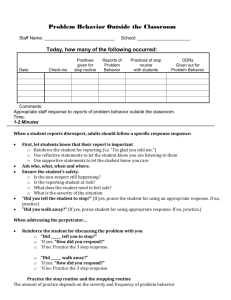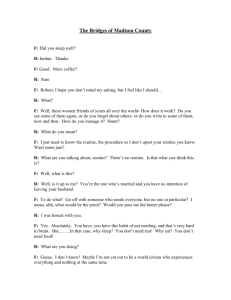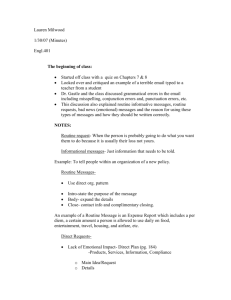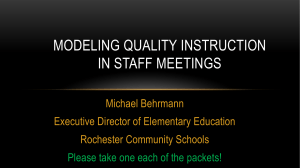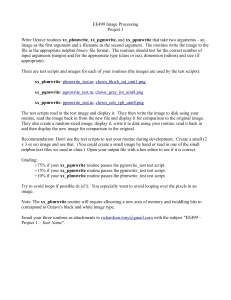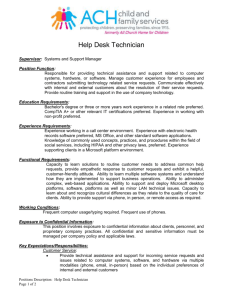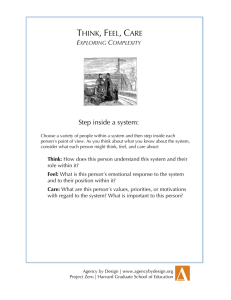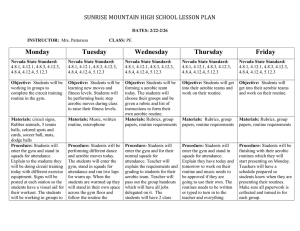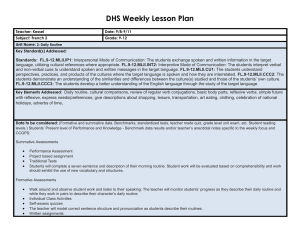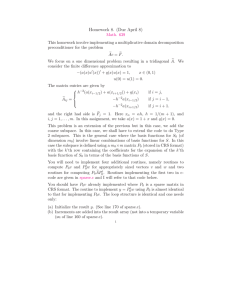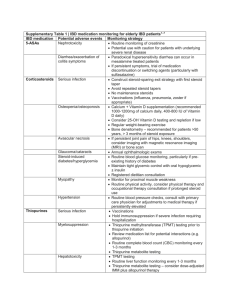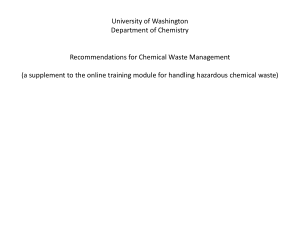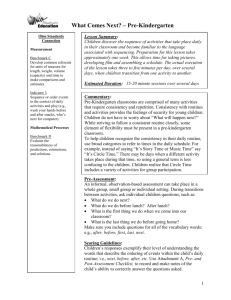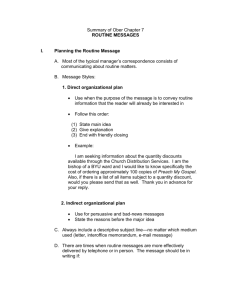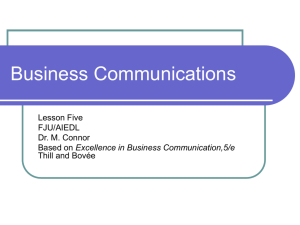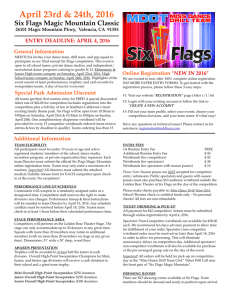Problem Behavior Outside the Classroom
advertisement
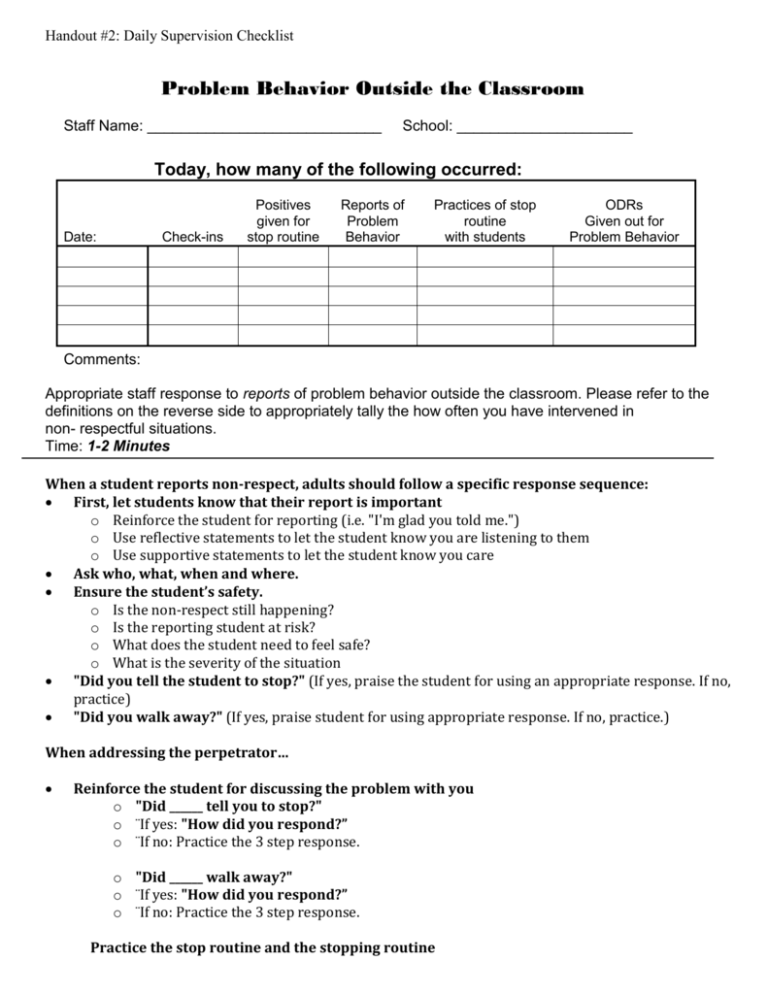
Handout #2: Daily Supervision Checklist Problem Behavior Outside the Classroom Staff Name: ____________________________ School: _____________________ Today, how many of the following occurred: Date: Check-ins Positives given for stop routine Reports of Problem Behavior Practices of stop routine with students ODRs Given out for Problem Behavior Comments: Appropriate staff response to reports of problem behavior outside the classroom. Please refer to the definitions on the reverse side to appropriately tally the how often you have intervened in non- respectful situations. Time: 1-2 Minutes When a student reports non-respect, adults should follow a specific response sequence: First, let students know that their report is important o Reinforce the student for reporting (i.e. "I'm glad you told me.") o Use reflective statements to let the student know you are listening to them o Use supportive statements to let the student know you care Ask who, what, when and where. Ensure the student’s safety. o Is the non-respect still happening? o Is the reporting student at risk? o What does the student need to feel safe? o What is the severity of the situation "Did you tell the student to stop?" (If yes, praise the student for using an appropriate response. If no, practice) "Did you walk away?" (If yes, praise student for using appropriate response. If no, practice.) When addressing the perpetrator… Reinforce the student for discussing the problem with you o "Did ______ tell you to stop?" o ¨If yes: "How did you respond?” o ¨If no: Practice the 3 step response. o "Did ______ walk away?" o ¨If yes: "How did you respond?” o ¨If no: Practice the 3 step response. Practice the stop routine and the stopping routine The amount of practice depends on the severity and frequency of problem behavior Definitions of the data to be reported on the Check ins- Check-ins are part of the intervention where adults check in once a day with one student or a group of students. It is not related to incidents. It is as assigned by a team based on tier II intervention Check in/Check out system Positives for the Stop Routine- Verbally reinforcing students for using the stop routine Reports of Problem Behavior- The number of times students come to the teacher to report there was an incident or issue that required stop routine. Practices of the Stop Routine with students -The number of times, the stop routines-Stop or Stopping routines were practiced with students. ODRS given for Problem Behavior-Office referrals given for behaviors that needed more intervention, then stop routine. Clarify if other problem behavior. (ex. leaving school ground at recess, misuse of equipment, and the illegal use of weapons/substances.) These are office referrals but not necessarily involving stop routines by students. As a school you will define what constitutes an office referral. Basically, schools can define how they feel it is most useful.
